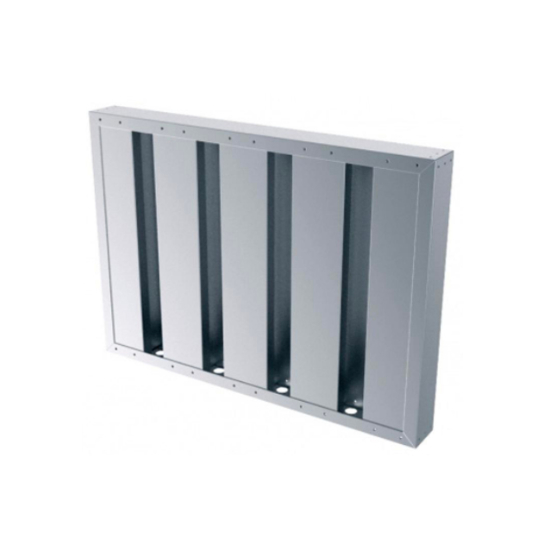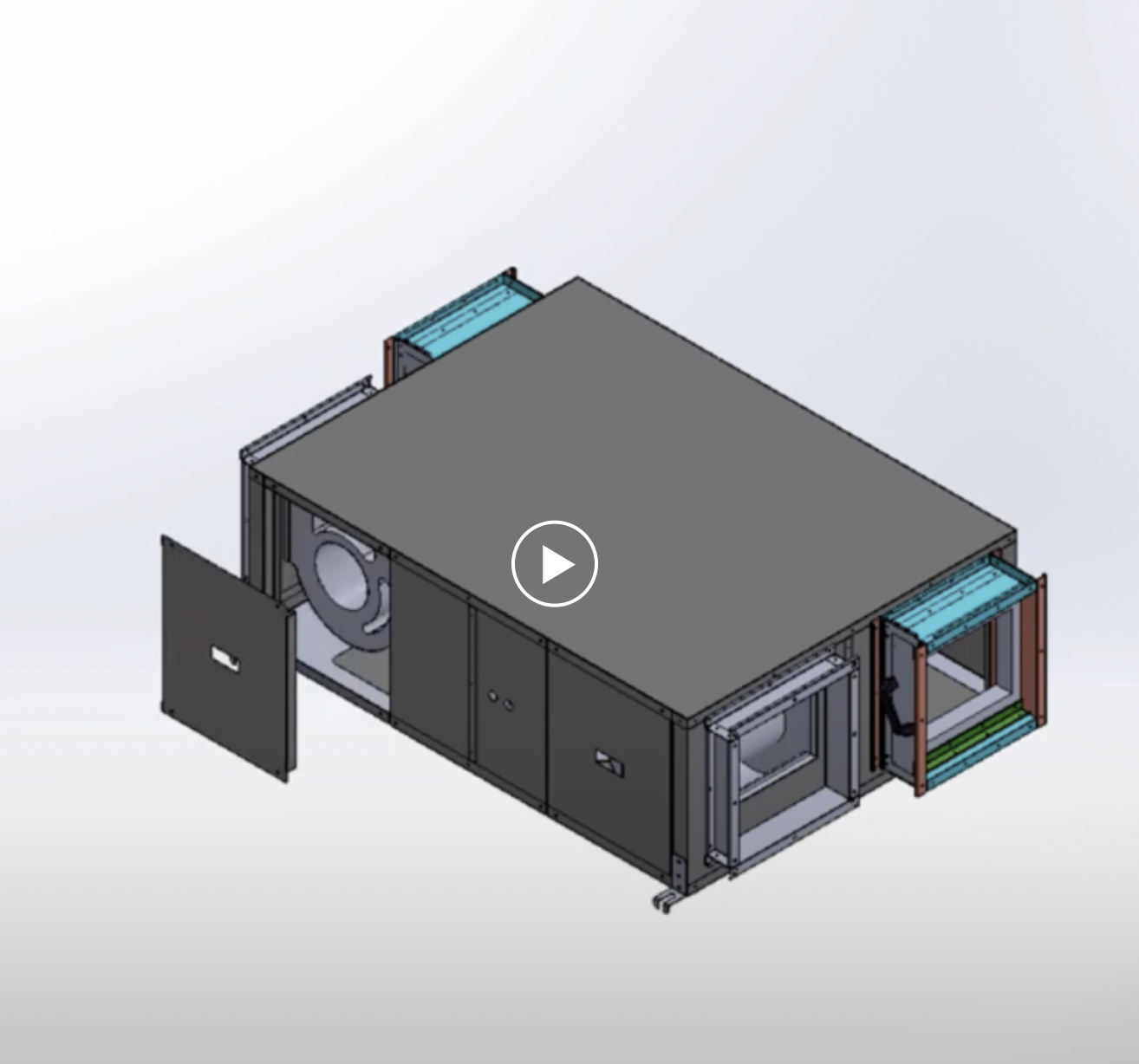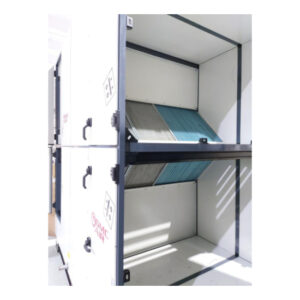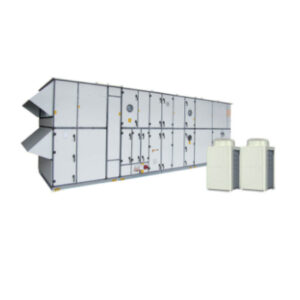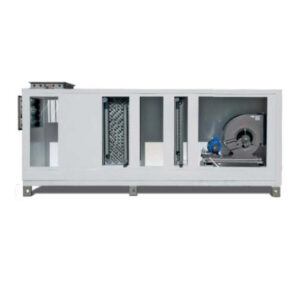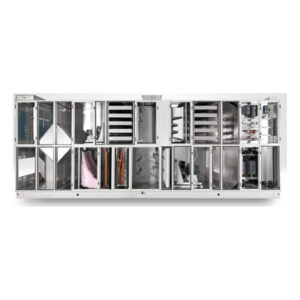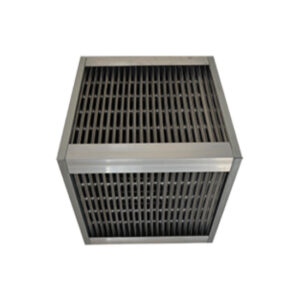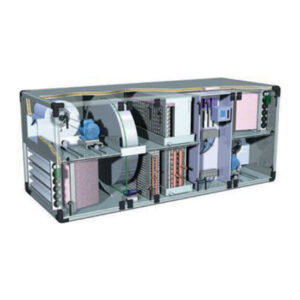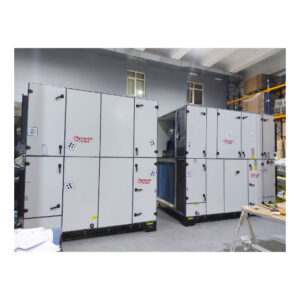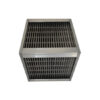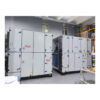Overview
Gmcair Air Handling Units offer you the most efficient, economical and safe air handling unit solution, inspired by years of heating, cooling and ventilation systems expertise. Strong construction comes from specially designed aluminum profiles and noise and thermal insulating panels at 25, 45 and 50mm thickness.
Gmcair Air Handling Units owe their high corrosion resistance to its favored design as well as component and assembly quality that eliminates condensation odds. Easy maintenance and servicing abilities remove operation troubles.
Service doors, panels, lighting and observation window accessories provide ultimate control at your hands. The device can be easily moved thanks to the carrying handles placed outside the unit.
GENERAL SPECIFICATIONS OF AIR HANDLING UNIT
• Between 1.000 – 150.000 m3/h air volume
• 25,45,50 mm thickness sandwich panel (rockwool density of 70 kg/m3 fire class A1)
• 0,8 -1,2 mm Inner and outer sheet thickness (Galvanized steel, Ral 9002, and stainless steel)
• Thermal conductivity T3
• Thermal bridging TB2
• Filtration levels (G2,G3,G4,F5,F7,F9,H13,H14,Active Carbon,UV)
• Water coil or DX coil
• Heat recovery units (Aluminium plate, run around coil and Rotary )
Heat Recovery System: Rotary
High Efficiency Rotors are used for Rotary Type of heat recovery. With thanks to type of Rotors Condensation, Enthalpy and Sorption types are available up to 98% heat recovery
Ventilator and Aspirator Units
GMCAIR air handling unit's ventilator or aspirator units are produced in standard chamber structure. While ventilator and aspirators can be chosen as forward or backward curved blades, radial single/double suction fans balanced statically and/or dynamically, they can also be designed with plug-fan. Electrical motor of fans are montaged on to the same chassis. In order to prevent the vibration that can be occured especially within this chamber, to the other part of the air handling unit, rubber or spring type vibration isolator is used at an amount and size dependent on the capacity, size, fan and motor cycles of the unit.
Belt and Pulleys
Pulleys used in fans and motors are V-belt pulleys appropriate to DIN 2211 and TS 148 norms. Pulleys are formed in two parts. Since, after the first part is mounted in fabric to the fan and motor spindle, the second part can be mounted without a need for a hardware, pulley size can be made very easily upon need.
In order to transfer power between motor and fan pulleys, narrow V-belts (appropriate to TS 198/40 DIN 7753/1) or classical V-belts (appropriate to TS 198/1 DIN 2215) are used. Moreover, there is a belt stretching mechanism for adjusting the belt tightness between the fan and motor to the desired and efficient level.
Filters
Montage frames are designed for different filter classes used together with air handling units for several different purposes. Thanks to this design, filters can be placed very easily into their sockets with spring systems. Moreover, with this design, any possible by-pass that can be occured at filters are reduced to minimal levels. G3-G4 class filters used as front-side filters, have galvanized frames, and with galvanized string connections, they are installed with increased resistance to air flow.
Bag filters with different classes are used as second-level filters in air handling units. Besides, they are used as first-level filters for hygienic air handling units. Bag filters can be chosen out of F5 to F9 classes. In air handling units, rigid filters can be used as the last filter at between classes F5 to F9 upon need. In order to filter undesired odor, active carbon filters both with carbon imbued panel or with cartridge, can be used.
Coils
Heater and cooler coils used in air handling units are manufactured as aluminium fin / steel pipe or steel fin / steel pipe depending on fluid features.
All coils are subject to hydrostatic tests before installation. In order for easy maintenance and montaging, special sliding mechanism is designed. In air handling units with cooling coils, rustproof condensation pan and polypropylene drop holder (appropriate to DIN 7728 standards and resistant up to 130oC) is used in standard.
Humidifier
Steam and liquid evaporating humidifier units can be produced upon request in standard cell structure. In order to prevent water drops, that formed during humidification within the cell, to get over to the surrounding or to the other parts of the unit, polypropylene water drop eliminators are used and installed to the inner part of the cell.
Silencer
Silencer modules are manufactured in standard cell structure. Rock wool or glass wool is used in silencers. Different numbers of columns can be used within the cell depending on sound attenuation features with respect to capacity and size.
Please have a look on product catalogs for technical details ..

